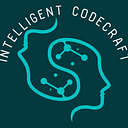Member-only story
Little vs. Big: The Endianness War in Computing
My articles are open to everyone; non-member readers can read the full article by clicking this link.
Imagine you’re sitting down to breakfast, cracking open an egg. Now, imagine there’s a fierce debate over whether you should crack it from the big end or the little end. Ridiculous, right? Well, that’s exactly what Jonathan Swift parodied in Gulliver’s Travels, and as it turns out, it’s not just about eggs — it’s about bytes too. Welcome to the world of endianness, where the way we crack our bytes can make all the difference.
What the Heck is Endianness?
Endianness is the order in which a computer stores and reads multi-byte data, like integers or floating-point numbers. Think of it as the difference between reading a book from the front cover (Big Endian) or starting from the back cover (Little Endian). It might sound trivial, but this little detail can have huge implications in computing.
At its core, endianness is all about how data is represented in memory. In Big Endian systems, the most significant byte (the “big end”) is stored at the lowest memory address. In Little Endian systems, the least significant byte (the “little end”) takes that prime spot. It’s a bit like choosing to either read a book from the first page or the last page — both are valid approaches, but the experience is quite different.
